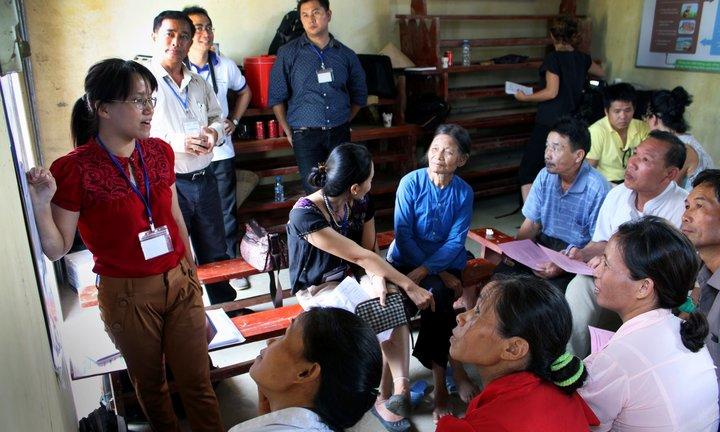New six-step methodology employs farmers’ knowledge and experiences to determine research priorities

Bioversity International’s scientist Ronnie Vernooy blogs about a new six-step methodology that facilitates participatory processes with men and women farmers in order to select the most effective climate-smart technologies and practices.
Bioversity International’s scientist Ronnie Vernooy blogs about a new six-step methodology that facilitates participatory processes with men and women farmers in order to select the most effective climate-smart technologies and practices.
Participatory technology development has been around for some time now. It was first developed to give farmers a much stronger voice and - ultimately - choice in the identification of promising (new) technologies to improve agriculture or rural livelihoods more broadly.
There are many manuals that describe this process. One would think that researchers have become experts in this field. Perhaps not yet. In a recent email exchange of experiences about technology development with farmers, Huong Pham, a CIAT associate in Hanoi, Vietnam, observed: “Last time when I joined the harvest day in Ma climate-smart village in the north of Vietnam to assess the yield of new varieties of cassava, some new varieties had proved to bring higher yield in comparison to others. Nevertheless, they are not accepted by many villagers due to a high requirement of labour. The villagers prefer to go out to work in non-agricultural jobs rather than invest their time in new varieties of cassava since profits from cassava are not so high.”
Farmers' ex post evaluations are very useful, but it would be better if researchers working on agricultural improvement would have found out about their preferences before the introduction of new varieties. Much time and effort could have been saved or diverted to testing other options.
The new publication Testing climate-smart technologies and practices in South-east Asia: a manual for priority setting presents a novel methodology to avoid such problems and disappointment. This manual, produced with the support of the CGIAR Research Program on Climate Change, Agriculture and Food Security (CCAFS), includes a number of principles and a sequence of six steps. These steps are based on a critical review of past and ongoing participatory climate-smart technology selection experiences carried out as part of research on climate change adaptation in Africa and Asia and the experiences of the authors with similar processes and activities, complemented by insights from the literature.
A draft of the manual was put to the test by a research team in Ma village in Vietnam in July 2015 and then revised based on the strengths and weaknesses detected.
The six steps are:
- Selection of an initial basket of promising technologies
- Participatory ex ante assessment of the initial basket of promising technologies (technology fair)
- Discussion with farmers of shortlisted technologies
- Interactive technology event
- Scoring and final ranking of promising technologies by farmers
- Selection of one or more promising technologies for testing.
Some of the key features of the approach are:
- Promising technologies need to be described in detail with the help of audiovisuals considering that many farmers have weak reading skills. Apart from technical descriptions, aspects that require attention include: costs (in terms of labour and other inputs required), time horizon (e.g. number of years before fruit trees bear the first fruits), and risks (e.g. price volatility, pest and disease susceptibility).
- The priority-setting process is conducted according to the above-mentioned steps, and farmers are given enough time to reflect on and discuss among themselves the options presented.
- More than one technology can be tested at a time—assuming sufficient resources are available—in particular to respond to different interests and needs in the village, e.g. of landless villagers, less resource endowed households, women and men farmers.
Download Testing climate-smart technologies and practices in South-east Asia: a manual for priority setting
Photo: Pilot testing of the priority setting methodology in Ma village, Vietnam. Credit: Bioversity International/R.Vernooy
